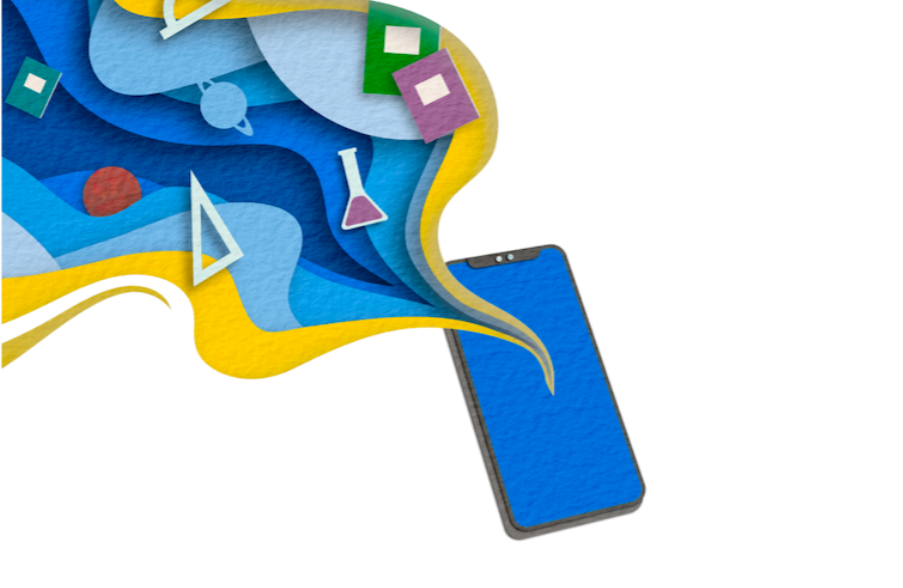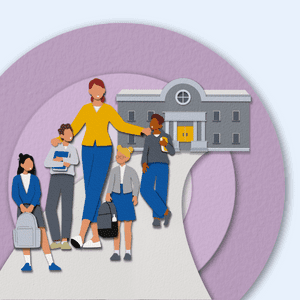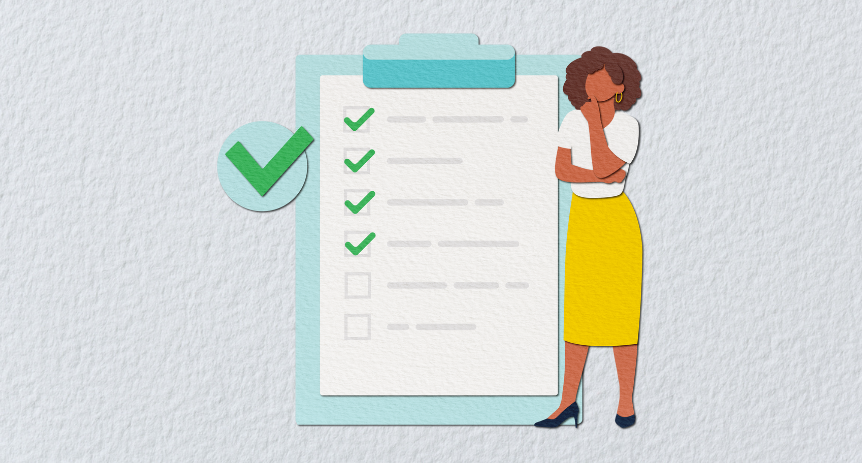No matter how thoroughly you craft your lesson plan, there will come a day when you find yourself with extra time at the end of class. Rather than waste valuable learning time, come equipped with activities to engage your students. Not every activity will be a good fit for every school you substitute at, so be sure to check with the administration if you’re unsure.
Read on for creative projects, movement based activities, as well as writing and thought experiments for all age levels!

Elementary school
1. Tell a communal story
Ask students to generate a story that begins with “once upon a time” and incorporates a list of concepts or words you select from class material. You can also use story cubes (or make your own!) to inspire them with images. They’ll enjoy the fun that comes with the randomness of rolling dice.
With younger students, do this activity together aloud; with older students, you may choose to use this as a writing activity.
2. Create a card
Give students time to make a card for someone special in their lives. This incorporates drawing, coloring (which are both excellent activities for developing fine motor skills), and writing.
Special paper (card stock, colored paper, etc) can go a long way in motivating students to do their best work on an activity like this. If special paper is not available, teach the kids an interesting way to fold cards. This can be a treasured opportunity to create something meaningful and fun, especially for younger classes.
3. Tell (or write) a descriptive story about a picture
Bring in a photograph or art print, grab one from a book in the classroom, or project one from the internet. Ask your students to describe the picture in as much detail as possible by using specific sensory words and adjectives. Write those words on the board, and encourage kids to hypothesize what is going on in the photo. Encourage students to use their imaginations to tell or write a story, depending on the class age. Share the different observations.
4. Play ‘Would You Rather’
Findings by Stanford researchers show games help develop patience, engagement, and discipline — skills that correlate with success even more highly than IQ.
“Would You Rather” is a fun, silly game that has the added bonus of helping you get to know your students a little better. You simply ask questions such as, “would you rather be turned into a giant bunny rabbit or a miniature giraffe?” or “would you rather sneeze 75 times every single day or always have to wear flip-flops everywhere you go?”
Here’s a list of 200 questions to help you get started.
5. Play ‘Doggy Doggy, Where’s Your Bone’
For this game, you’ll need a pencil and a chair. One student plays the role of the doggy and sits in the chair with their back to the group and eyes covered (with their hands or a blindfold). Another student quietly steals the “bone” (pencil).
Everyone sings,
‘Doggy, doggy, where’s your bone?
Somebody stole it from your home.’
The child in the chair has three chances to guess who took it. No matter if the student in the chair guesses wrong, the student who took the bone will get a turn as the dog. Be sure to rotate often so everyone gets a chance to guess!
6. Play a screen-based game as a class
Consider engaging students in a screen-based game. If your students have access to computers, check out offerings from PBS or Fun Brain. If you’re projecting from one computer in front of the class, find a quiz video or other group online game. If kids have access to individual computers, look at Kahoot! to choose from preselected learning games.
As always, remember that most schools have a policy on computers, so be sure to ask about what might be appropriate for the classroom you’re subbing in.
7. Host a group work showdown
Divide older elementary students into small groups. Each group gets the same set of review questions to work on. (This material can review the day’s work or a work from a larger chapter/unit. Often these questions can be found in the text.) The group that finishes first with the most correct answers wins.
8. Read aloud
Never underestimate the power of story time. There are many benefits to reading aloud to children. No matter what their age, most elementary students transform once they are captivated by a book. Whether you have them remain seated at their desks or invite them to sit in a circle around you, choose a book or two from the teacher’s collection (or ask if anyone has a favorite they can share) and let them get lost in a good story.
9. Strike a pose
Play a song and tell students to freeze and strike a pose when the music stops. Use a variety of tempos and musical styles to mix up the fun.
10. Do a little mirroring
Mirroring is a way to focus children and develop concentration skills. Students stand facing each other and pretend they’re looking in the mirror. Tell them to move slowly. The goal is to copy each other’s movements precisely. Allow one child to lead first, and then the other. Then, challenge them to mirror each other without one specified leader.
If you’re familiar with the classic word-finding game of Hangman, you’ll know how to play these more culturally sensitive versions of the game. You’ll get the same learning benefit of the original and also learn to draw something far more appropriate for the elementary school classroom.
Elementary school (long-term subs)
These movement-based activities for elementary classrooms work best for subs who are confident in classroom management and have gotten permission to use them with school administrators. Always remember to prioritize student safety, and be sure to remind students not to travel beyond the personal space they take up with arms spread.
12. Hold a mini yoga class
Long-term subs can benefit from creating short moments of repetition that happen every day. This activity works best as part of a routine: maybe the first thing you do after lunch or after the bell, for example.
You might think of it as an adult pastime, but yoga is perfectly suited for children, too. It enhances their strength, balance, and coordination, and it promotes awareness and calm. See these 10 Commandments of Teaching Kids Yoga for ideas on how to keep it fun and productive.
13. Dance it out
Research from leading universities has shown dancing has beneficial effects on the brain. It even stimulates reward centers, improves memories, and strengthens neural connections! This idea works especially well for young students (grades K-3).
Turn on a cool, age-appropriate song, and let your students boogie down before you wrap up the class or change activities.
14. Have them touch the rainbow
This is a great game for young children, and can lead well into a change of activities. Tell students that when you call out a color, they must find it in the room and touch it. Remind students of appropriate classroom rules (ex: “no running”). They’ll speed-walk to touch posters, furniture, and other classroom items. After you’ve led the game for a few turns, let a student take over and be in charge of the fun.
15. Do some exercises together
Jumping jacks, jogging in place, planks, and other simple exercises are easy to do without traveling across the room.
They can even be used to accompany a lesson! Ask a student to spell out vocabulary words while they do jumping jacks or jog in place while they recite a poem. For younger children, try out a video program like Go Noodle.
Middle school
16. Play ‘Telephone’
In this classic game, players whisper a message from person to person. Inevitably, the message changes along the way. When the last person says what they think the message is aloud, it’s often very different from where it began.
Telephone teaches kids about the importance of listening closely. It also might be an interesting jumping off point to talk to older kids about how information changes when it passes through different channels (as it does constantly on the internet).
17. Play ‘20 Questions’
“20 Questions” is a guessing game that helps students learn how to use reason and logic. Choose one student to be the “answerer” who knows the “answer” — a person, place, or thing that the other students will try to guess.
Students will have 20 opportunities to narrow the question down and find the answer. For example, they might start with a question like, “Is it smaller than a bowling ball?” and lead to the final question, “Is it a classroom tool?” to determine that the answer is a stapler.
18. Hold an open question session
Sometimes, students just need an open forum to ask questions during a particularly complex lesson. Before jumping in and answering, open each student’s question to the class and guide and refine their answers as needed.
19. Write a short story inspired by one of their favorite songs
Ask students to think of one of their favorite songs and write a short story. They can write about the storyline, images, or themes of the song. Students can volunteer to read their stories aloud if time permits. This works especially well with older elementary and middle school-aged students.
20. Write a poem about an upcoming event
The smell of roasting turkey? The cackles of witches flying overhead? Warm hot chocolate during a winter celebration? Writing about the holidays or other special events is a great opportunity to engage students in descriptive writing. As a bonus, encourage students to share their poem as a heartfelt gift for their family members.
21. Draw a picture
This one’s really simple. All students need is a piece of paper and a pen. Ask them to draw something from sight — or have them imagine and draw something related to a lesson plan (e.g., a historical figure, a scientific concept).
Middle schoolers relish activities — like drawing — that let them connect with their younger selves a bit and aren’t typically included in their school day.
22. Write a song
The easiest way to write a song as a class is to take a well-known melody from a current pop song and ask students to adapt it. Tie it to the lesson plan to make it funny and keep the learning environment light.
23. Show a relevant video and tie it back to class lessons or general learning strategies
There’s no way around it: Video has become a part of education at all levels. Used effectively, it can be a great asset in the classroom.
Some schools require permission for substitutes to use videos and computers. As long as you know this practice is OK with school administration and are comfortable with the technology, consider showing a relevant video at the end of class and tying it in. You’re engaging different parts of the brain and adding useful knowledge to the lesson.
The most straightforward way to incorporate video into the day is to pick a relevant video and talk to the class about how it relates to the lesson. Here are a few examples of videos you might use:
- The Awareness Test — This fun test of student awareness helps students understand the importance of paying attention. This video is great if you have an especially distracted class!
- Eric Whitacre: A Virtual Choir 2,000 Voices Strong — This user-generated choir is created out of 2,000-plus submitted videos. It can inspire students and show them the limitlessness of creativity.
- The Power of Words — This video, which portrays a fictional interaction between a woman and a homeless man, underscores the power of words.
- TED-Ed project is TED’s education initiative. It has carefully curated videos related to a wide range of topics, from literary terms to physics to philosophy and more.
24. … or just show a fun video that will make them laugh
You can also entertain them with a brief, wholesome video and give them a good laugh. Marcel the Shell with Shoes On is a great example of a video that’s fun for students of just about any age. Silly, adorable, and endlessly quotable, Marcel will capture students’ hearts.
<<What substitute teachers can do when students finish early>>
25. Play ‘Silent Ball’
You’ll need one small ball for this activity. It should be an appropriate size for the age of your students. Clear an area in the center of the room and select a leader to start. They will count down “3, 2, 1, silent” and pass the ball to another person. This person then passes it on. Students must sit down if they drop the ball, miss a pass, or make any noise at all! Whoever remains standing at the end is the winner. In addition to burning kinetic energy, this activity builds hand-eye coordination and non-verbal communication.
26. Write a thank-you note
Studies continue to explore the benefits of feeling gratitude, which include lower stress levels, increased happiness, and better sleep. What middle-schooler can’t use those things? Have students write down three things in their lives they are grateful for and then choose from the list to compose a thank-you note to a person in their lives who made it possible.
27. Read them a story
Everyone loves a good story, and you may be surprised at how attentive middle-grade students can be to a picture book. Pick an inspiring one such as Dr. Seuss’s classic Oh, The Places You’ll Go!, or an inventive one that most have never read, like Oliver Jeffers’ How to Catch a Star, or Drew Daywalt and Adam Rex’s The Legend of Rock, Paper, Scissors.
Middle school (long-term subs)
28. Write in journals
If you’ve been with students long enough, you’ll know if they keep regular journals. If the lesson ends early, consider asking your students to take them out and write a short passage about the day. It can include any good news or challenges they face. The goal is simple — get them thinking about and practicing how to put those thoughts on paper. Make this a routine to get the most out of it.
29. Put students in the hot seat
For a great review activity, have students take turns sitting in the “hot seat.” Behind them, write a vocabulary word. The student in the hot seat can call on three of their classmates to give them clues about the word without saying it. This will keep the rest of the class engaged, even when they themselves aren’t on the seat! You can use this for a daily review, but it can also work well if you’ve been with students for the duration of one chapter or unit.
30. Play ‘Heads-Up!’
For this game, create sticky-notes with vocabulary words, the names of fictional characters, science concepts, or any other relevant classroom topic. Have the students put the sticky-notes on their heads without looking at them. Their partners try to get the other student to guess what’s written on their card without saying it.
31. Play ‘Pass the Chicken’
As long as you don’t mind traveling with a rubber chicken, you can play this silly review game with your class. The chicken gets passed from student to student. Ask one student a question and tell the student to answer it before the chicken reaches them. If the chicken reaches them before they can answer, they go to the center of the class or “the pot.” If another student can’t answer a question, the student in the middle gets a chance to get out of the pot.
High school
32. Write a letter to a local, national, or world leader
In this activity, ask students to write a letter to an elected official or other leader and persuade them on a matter of policy. The letter can be imaginary or something the students will actually send. This is an exercise in persuasive writing intended to influence the reader. Ask them to support their reasoning with concrete evidence and logic.
33. Pair up and quiz each other
Students can use review questions provided in their textbooks, by their teacher, or that they come up with on their own. This is a great activity for early-finishers, and can be treated as part of the overall lesson.
34. Play the ‘ABC Game’
In this game, you divide the class into teams. Name a topic, such as “animals” or “the Great Depression” and have teams take turns naming things that fit into the topic, going through the alphabet. For example, they might say, “aardvark, badger, cougar…” or “Agricultural Adjustment Act, Black Tuesday, Calvin Coolidge…”
35. Create review crosswords
Hand out graph paper. Have students create a crossword puzzle for their classmates using words from the chapter they’re studying.
36. Write a letter to their future selves
Another spin on letter-writing is to ask students to address their future selves. Pick an age — 10 or so years in the future — and ask them to write to them as they would a friend or mentor. They can ask questions, imagine what their life is like, and share their dreams for the future. This is an exercise in descriptive and expository writing. Students will get excited about the personal nature of the assignment.
37. Write a chain story using vocabulary words
Divide the class into groups of five or six. Ask each group to write a paragraph-long story incorporating lesson-specific words or vocabulary words. Assign each student one word and have them go around in a circle adding a sentence at a time. Each sentence should include one vocabulary work.
To make this activity even more fun, use another blank sheet to cover up everything in the story except the preceding line. The stories will turn out a bit ridiculous, amusing students as they learn their vocab words.
38. Write a poem copying meter
Learning about the rhythm and meter of poetry has many benefits for students. For the youngest, it’s a way to understand rhyming and counting. For older students, it links music, math, and language. Help your students understand the meter of a poem and ask them to recreate it in their own poem. Iambic pentameter is a good sing-songy choice. (It’s recognizable in Robert Frost’s “Stopping by Woods on a Snowy Evening” and many other poems.)
39. Free write
This one’s simple and bound to get students engaged. Tell students their task is to put pen to paper and write about anything on their minds. The only requirement is to keep writing for a certain amount of time. Set a timer, then ask students to reflect on the writing process. Did the flow get easier or harder? Did they get stuck anywhere? Give them an option to share their writing with the class.
40. Design a dream home
Most students enjoy envisioning their futures. Ask them to sketch the floorplan of their dream house; graph paper, if available, is great! When they’re finished, ask if they’d like to share why they chose certain features. A student might have a room for the many dogs they hope to own, or they might put in a basketball court. This helps you get to know them and lets them share their passions.
41. Practice mindfulness
Lead your students in a mindfulness activity. Mindfulness has been shown to mitigate bullying, help students with ADHD focus, and improve overall social skills. In the classroom, mindfulness can be as simple as breathing exercises. Another idea is to take students around the room on a “Safari” and ask them to be present to sights and sounds. Or use an app like Calm or Headspace to guide them in a longer meditation session.
42. Conduct interviews
Pair students up and give them an opportunity to interview one another for three or four minutes. You might give them a specific topic to discuss — a hobby, pet, or a family member. Then, go around the room and have the interviewers “report” on their subjects to the class.
43. Improvise
Improv gives students the opportunity to anticipate reactions and learn how to go with the flow and work collaboratively. It’s also a practical game for nearly all ages! See this list of 13 Fun Improv Games for ideas about how to get started.
44. Ask for advice
Students in grades 7-12 are developing strong opinions and are often excited to share them. At the beginning of the period, share a scenario, and write a question on the board in front of the class, soliciting advice. Those who finish early can write up a list of suggestions for you. Example questions can come from real life: “I haven’t had a chance to listen to new music lately. If you finish early, will you make a list of your favorite musicians? What do you love about their music?”
45. Color
While you may think an activity like this is appropriate for only younger students, coloring can be a relaxing and meditative activity for all ages. Make a few copies of coloring pages and bring them in for students who, for instance, finish a test early.
High school (long-term subs)
46. Hold a class-wide review session
Divide the class into teams. Come up with questions off the top of your head or consult the teacher’s edition of their textbooks.
Traditionally, Celebrity is a charades-like guessing game where participants guess celebrities submitted by the players. You can adapt it for the classroom by having students guess historical figures or characters from literature.
In the first round, students give clues to their teammates using any words besides the famous person’s name. In the second round, the student acting out the famous person can use only two words. And in the final round, the student can only silently act out the famous person to try to get their team to guess correctly.
48. Write a learning reflection about the day’s lessons
Brainstorm a few reflective questions to get students thinking about what they’ve learned during the class period. This will help them review the material and start to think more critically about it. Self-reflective questions also help. These include asking them to write about what they struggled with or what made them curious. Always treat learning reflections as part of the lesson, not as an addendum, to encourage students to do their best work.
49. Tell them a story
Come prepared with a couple of stories about your life. Have them choose: do they want to hear about how you worked at a tech start-up for a couple of years or what happened when you got lost in Costa Rica? Students will enjoy getting to know you, and they’ll learn a little about the world outside the classroom, too!
50. Make them laugh
When the school and administrators know you well enough to trust you, don’t be afraid to add a little whimsy to the day. Whether you read aloud from a funny David Sedaris essay or play a brief audio clip from a funny (and clean!) stand-up comedian like Brian Regan or Jim Gaffigan, nothing will endear you to high school students more than letting them laugh for a few minutes at the end of class.
Looking for more classroom resources? Check out 7 Meaningful Activities for Students who Finish Early.







